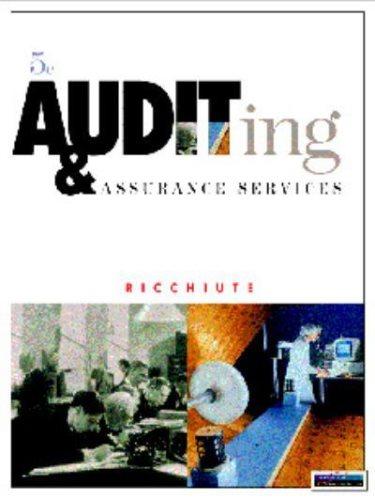You have audited the financial statements of the Heft Company, a December 31 year end client, for
Question:
You have audited the financial statements of the Heft Company, a December 31 year end client, for several years. The interim phase of the engagement, completed on August 31, included confirming accounts receivable and indicated that internal controls over receivables are effective and therefore that control risk is below the maximum.
Credit sales are made principally to manufacturers. Of 1,500 active trade accounts receivable, about 35 percent represent 65 percent of the total dollar balance. Receivables are maintained alphabetically in five subsidiary files, and the files are controlled by one general ledger account.
Sales are posted by an operation that simultaneously updates the customer's balance (and monthly statement) and records the transaction in the sales journal. All cash receipts are in the form of customers' checks that, when posted, simultaneously update the customer's ledger balance, monthly statement, and the cash receipts journal.
Information for posting cash receipts is obtained from remittance advices that are returned in envelopes with the customers' checks. The bookkeeper compares the remittance advices with the list of checks that was prepared by another person when the mail was received.
Summary totals are produced monthly by the bookkeeper for posting to general ledger accounts such as Cash, Sales, and Accounts Receivable. An aged trial balance for each subsidiary is prepared monthly.
Sales returns and allowances and bad debt writeoffs are summarized periodically and recorded in the general journal. Supporting documents for these journal entries are available. The usual documents arising from billing and shipping are also available.
Required:
Prepare an audit program to test Heft Company's year end trade accounts receivable. Use the substantive tests introduced within the chapter as a guide, but not as a final and complete answer.
Step by Step Answer:






